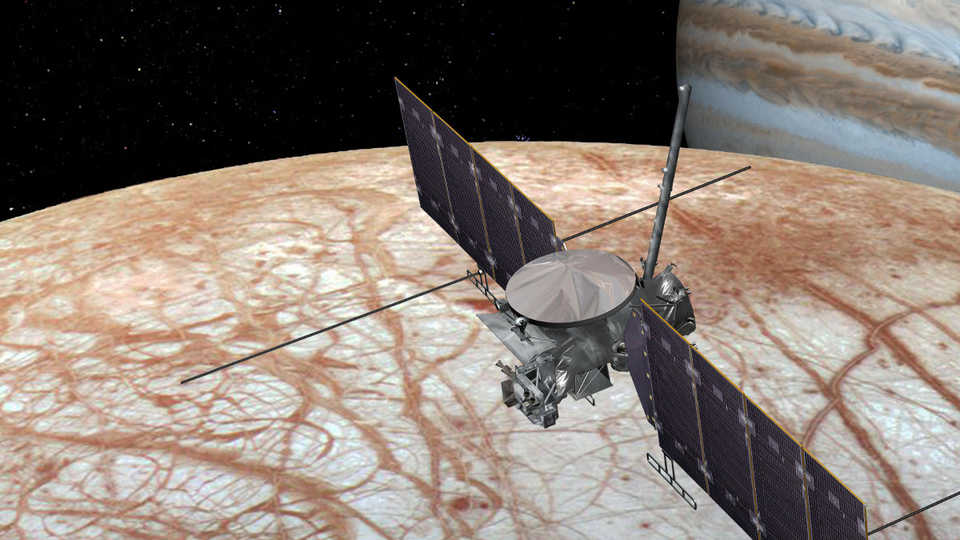Mapping the Heavens, Priyamvada Natarajan, Yale University
Monday, March 6th at 7:30 pm

An artistic image of what the spacecraft might look like as it orbits Europa
Ever since our spacecraft first entered the Jupiter system, Europa has been an object of intense interest for astronomers. It is the second of the four major moons of Jupiter, collectively called the “Galilean moons” in honor of their discoverer,Galileo Galilei. Europa itself is visually striking, with a white sheen of ice marred by cracks and dark surface streaks of material originating from within the moon and from the volcanic plumes of its neighboring moon Io. Europa has long been considered a place where life might already exist. Increasing evidence for an interior ocean has scientists waiting impatiently for the opportunity to send an exploratory probe to explore this amazing world’s strange surface and its sunless seas.
That probe is finally coming. NASA greenlit the early stages of a mission last year, okaying the initial planning and proposals for instrumentation, but come next Monday, February 27, the mission will enter the design phase.Phase B is when the spacecraft will start to take shape. As the different planned instruments are brought together, power systems and the spacecraft’s internal configuration will shift and change to accommodate them. Eventually, prototypes will be built and an almost fully functional version will be ready for phases C and D—which consist of fabrication of the probe itself, testing, and final approval.
While we have still a pretty long time to wait until the 2020 launch, and a huge distance to travel to Europa, this is an exciting step towards the final goal. The mission will be set to conduct an intense series of flybys—45 or so in total—and allow for an in-depth look at the surface at high resolution.
Europa will prove to be a treasure-trove of scientific information, and not just for insight into our own solar system. This week’s announcement that the TRAPPIST-1 system hasouter ice worlds that bear a striking resemblance to the Galilean moons: TRAPPIST-1’s planets are located so close to their parent star that they remain tidally locked, as does Europa—and Europa also orbits Jupiter at a similar distance as the exoplanets do their star. We now know of severalicy moons in our solar system, and they are bound to exist elsewhere as well. Taking the plunge and observing one up close will give us a better understanding of some of the most interesting worlds in our solar system and beyond!
Mapping the Heavens, Priyamvada Natarajan, Yale University
Monday, March 6th at 7:30 pm